Reggae Nation
Reggae From Around The World. Catch the Vibes!
Reggae Nation Classics

Spotlight: GREGORY ISAACS
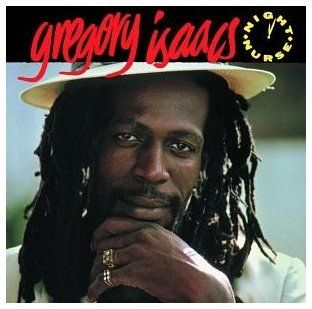
One of Jamaica's most beloved vocalists of all time, Gregory Isaacs' career has stretched over 30 years. From the heady days of rocksteady through lovers rock, a genre he virtually invented, his talent reached into the modern age. Born in the Fletcher's Land area of Kingston, Jamaica, on July 15, 1951, Isaacs arrived in the music business via the talent show circuit, a tried and true formula for many of Jamaica's budding stars. Byron Lee was the first in the industry to spot his talent and brought him and Winston Sinclair into the studio to record the duet "Another Heartbreak" in 1968. Sadly, it went nowhere, and Isaacs decided to try his fortunes with a new vocal trio, the Concords. They set up home at Rupie Edwards' Success label and over the next couple of years, released a number of singles, including one with Prince Buster, but none caught the attention of the Jamaican public.
In 1970, the Concords folded and Isaacs struggled on alone. His initial self-productions were similarly unsuccessful, then in 1973 Isaacs set up his own record store and label, African Museum, in partnership with Errol Dunkley, a young singer with a string of hits to his own name. Apparently some of Dunkley's own magic wore off and one of the label's first releases, Isaacs' own self-produced "My Only Lover," was an immediate hit and the floodgates opened wide. Besides African Museums' offerings, Isaacs helped keep the label solvent by recording with virtually every producer on the island for a stream of hits that showed no sign of abating.

Between 1973 and 1976 alone, the singer released more material than most artists do in a lifetime, virtually all of it timeless classics. 1975's In Person, for example, features a heavy hitting collection of successes for producer Alvin Ranglin and was followed up in 1977 by Best of, Vol. 1 and Best of, Vol. 2 in 1981. (The Heartbeat label would bundle up this material across three CDs for the U.S. market: My Number One, Love Is Overdue, and The Best of, Vol. 1 and 2). Similarly, 1976's All I Have Is Love includes a hit-filled package of Sidney Crooks productions. Extra Classic, co-produced by Isaacs, Pete Weston, and Lee Perry, is also stuffed with chartbusters and showcases the singer's deepest roots material. The latter album appeared on African Museum cut with a diverse range of producers, across three volumes titled Over the Years.
In 1977, the U.K. was treated to an equally dread experience via Mr. Isaacs, released on Dennis Brown's DEB label. (Brown had released several classic albums of his own on African Museum). By this time, the two polar sides of Isaacs were apparent: the roots singer, whose emotive sufferer's songs and cultural numbers were filled with fire, and the crooning lover, whose passionate declarations of devotion quivered with emotion. Eventually, the vocalist's ties to the lovers rock scene saw his reputation as the Cool Ruler overshadow the equally impassioned roots performer, but his work in the latter half of the '70s shows his heart was true to both. Isaacs was quick to take advantage of the rise of the DJs; producer Ranglin paired him with a string of cutting-edge toasters for another flood of hits, beginning in 1978. It was at this time that he first hooked up with DJ Trinity, a partnership maintained into the next decade across a stream of seminal singles.
By now, Isaacs was too big a talent to ignore and in 1978 he signed with Virgin's Front Line label. That same year the singer had a featured role in the classic Rockers movie. Inexplicably, however, as Isaacs was poised on the brink of international success, he failed to set the rest of the world alight. His debut Frontline album, the excellent Cool Ruler, barely ruffled a feather outside Jamaica. It did, however, provide most of the material for Slum: Gregory Isaacs in Dub, which boasted fat rhythms by the Revolutionaries, keyboardist Ansel Collins with Prince Jammy, and Isaacs himself behind the mixing board. Cool Ruler's follow-up, 1979's Soon Forward, was filled with hits soon-to-become classics. The latter's title-track was produced by Sly & Robbie and gave the pair's new Taxi label its first hit. Isaacs cut several more great singles with the team, which were brought together for 1980's Showcase album. Even with Frontline out of the picture, Isaacs continued going from strength to strength. Inking a U.K. deal with the Pre label and with his fortunes secure in Jamaica, the artist continued turning out hit after hit. His Pre debut, The Lonely Lover, and its follow-up, 1981's More Gregory, both boast the Roots Radics and a host of Jamaican hits that range from lovers rock to deep roots and on to the emerging dancehall sound. No wonder the singer was a hands-down success at the first Reggae Sunsplash. It was at this point that Island stepped up to the plate and signed the singer to their Mango imprint.
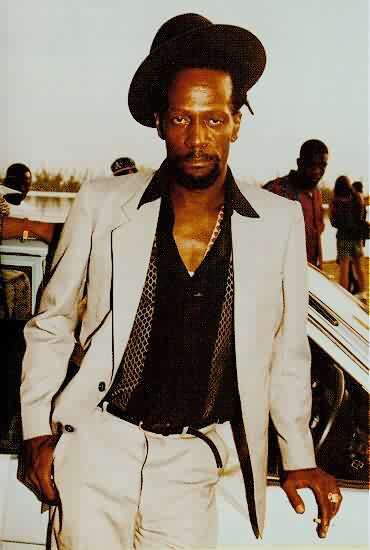
Virgin label head Richard Branson must have cursed his own stupidity, as Isaacs immediately repaid his new label's faith with his biggest hit of all, "Night Nurse." The song titled his Mango debut, another masterpiece, and again featured the steaming Roots Radics. Amazingly, as the song spread around the world, the singer sat whiling his time away in a Jamaican jail as the result of a drug arrest. He was released later in 1982 and immediately entered the studio to record Out Deh with producers Errol Brown and Flabba Holt. Once again able to take the stage, Isaacs played a series of awe-inspiring shows over the next year, captured on both 1983's Live at Reggae Sunsplash and the following year's Live at the Academy Brixton albums. Behind the scenes, Isaacs joined the shadowy conspiracy of vocalists determined to return vocalists to their rightful place in the market by flooding the shops with music. An all-star cast of veteran singers joined the plot, including Dennis Brown, John Holt, Delroy Wilson, and many more, but none would reach the prolificacy of the determined Isaacs.
It's been estimated that the singer has released up to 500 albums (including compilations) in Jamaica, the U.K., and the U.S. combined. The singer recorded with anyone and everyone and was just as quick to revise his old songs as create fresh ones. Although none of these are entirely disposable, inevitably the quality of Isaacs full-length work began to decline in the mid-'80s. The Ted Dawson-produced Easy and All I Have Is Love Love Love, for example, certainly have their charms, but are hardly crucial. But that didn't mean the hits had dried up. Those 500 records are albums only, not singles, and the shops (and charts) continued to overflow with Isaacs' 45s. And the rise of ragga just added hot new producers to the singer's packed recording diary. In 1984, producer Prince Jammy, equally intrigued with the changing sounds of dancehall, brought Isaacs into the studio for the superb Let's Go Dancing, while also pairing the singer with Dennis Brown for Two Bad Superstars Meet. The latter proved so popular that a second set, Judge Not, appeared the next year. The two singers dueted again on a track on Isaacs' 1995 solo album, Private Beach Party, which also boasted an exquisite "Feeling Irie," which paired him with Carlene Davis. The album was produced by Gussie Clarke, a man with the determined goal of creating an international crossover sound, via his own one-stop operation à la Motown. He hadn't quite succeeded yet, but Private Beach Party helped lay the groundwork.
1987 then brought a collaboration with the equally sweet-singing DJ Sugar Minott for the Double Dose album. Isaacs swiftly found himself a dancehall hero. It was during this period that Isaacs also recorded an album for King Tubby. Warning boasts the magnificent rhythms of the Firehouse Crew, and a dark atmosphere of foreboding slinks through the entire set. It was not released at the time and only came to light after the great man's murder in 1989. By then, Isaacs had already stormed the world, digital or otherwise, with the 1988 Gussie Clarke-produced "Rumours" (whose rhythm would launch scores of further version hits, including J.C. Lodge's "Telephone Love," an even bigger smash). The masterful Red Rose for Gregory boasts a clutch of hits beside equally sublime non-45 tracks, all cut for Clarke. The pair's follow-up, 1989's IOU, is arguably an even stronger album. That same year, Clarke reunited Isaacs and Brown for the No Contest album. Isaacs continued to cut seminal singles with Clarke, while also recording with a host of other producers. In 1990, the singer joined forces with Niney Holness for the excellent On the Dance Floor album. The next year saw Fatis at the controls for Call Me Collect, which boasts Sly & Robbie and Clevie, while Bobby Digital adds his unique production sound to 1991's Set Me Free. And having inked a deal with RAS in the U.S., that label's head, Dr. Dread, oversaw 1992's memorable Pardon Me. Philip Burrell was in the producer's chair for 1994's Midnight Confidential album.

But there was a slew of lesser titles as well; No Intention and Boom Shot, both from 1991, are workaday records, with the singer on autopilot. Past and Future sounds promising and features such illustrious guests as Sly & Robbie, J.C. Lodge, Winston Riley, and Boris Gardiner on material both new and old, but it's obvious that no one's heart is really in it, Isaacs' least of all. The patchy Rudie Boo (released by Heartbeat in the U.S. as My Poor Heart) suffers from a similar lack of interest on the singer's part. At least 1993's Unlocked featured a stronger set of songs, but much of Isaacs' releases throughout the '90s were hit-and-miss affairs. Midnight Confidential, for example, is totally disposable, except for the magnificent "Not Because I Smile." Most of the albums frequently revisit older hits, which even at their worst tend to stand out from the newer fare. Younger or less-experienced producers were in particular danger and as the years progressed, it was only the toughest and most innovative producers who could coax the best from the singer. Alvin Ranglin, for example, wrung an exquisite set of emotionally riven songs from Isaacs for 1995's Dreaming. Mafia & Fluxy's fat, dubby rhythms inspired one of the singer's best performances in ages for Hold Tight two years later. The wisest course in negotiating one's way through the minefield of latter-day Isaacs is to look at the production credits. If you like the slick production that's the trademark of Bunny Gemini, chances are you'll appreciate 1996's Mr. Cool. Junior Reid likes diversity, and thus, Not a One Man Thing has that in spades, from the slacker-themed "Big Up Chest" to a remodeled "Don't Dis the Dance Hall." Steely & Clevie laid down the rhythms for 1998's Hardcore Hits; if you're not a fan of their digitized dancehall mayhem, choose another album. King Jammy is let loose on 1999's Turn Down the Lights, and while not up to the standards of Let's Go Dancing, it's still an enjoyable ride. Joe Gibbs, Errol Thompson, and Sidney Crooks lent their expertise to So Much Love, another one of Isaacs better later offerings.
The singer showed in the new millennium with aplomb on Father and Son, which true to the title features Isaacs and his son Kevin. The duets are gorgeous, while the younger Isaacs is given plenty of room to prove that his talent is equal to his dad's. The next year, I Found Love marked the second time the two worked together. In between times, the singer continues to impress audiences live, and his prodigious output shows no sign of slowing; the legend of Gregory Isaacs continues to be written.
~ Jo-Ann Greene, All Music Guide
R.I.P. Gregory We Love You! July 15, 1951 - Oct 25, 2010
Spotlight: BURNING SPEAR
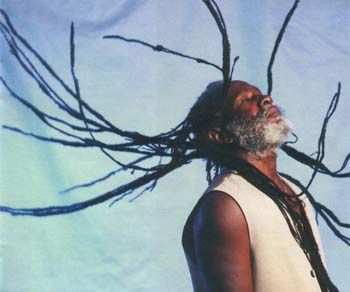
Burning Spear is an undisputed musical legend. Not a year goes by that he doesn't release a blockbuster album or complete a successful tour. His concerts are events, and each subsequent record that he releases is greeted with eager anticipation by reggae fans everywhere. "I don't know how other people see music," reggae legend Burning Spear reflects. "Some people might see it based upon money, some people might see music based upon opportunity and access. But I see music as life. I see music as inspiration." For more than 35 years, Burning Spear's music-thus, his life-has inspired people on numerous continents. Since the beginning, his songs have implored listeners to fight oppression in all its forms, to work at improving their own condition and to consider the social impact of their actions. Of his more than 25 albums, nine have earned Grammy nominations, with 1999's CALLING RASTAFARI and 2009's JAH IS REAL - receiving the Academy's Best Reggae Album honor. And he remains one of the few reggae pioneers still working and influencing the people today.
Born Winston Rodney in St. Ann, Jamaica, he was an early fan of Bob Marley. As the legend goes, Rodney bumped into Marley while walking through a field, and the two began talking about music. Marley encouraged him to visit Jamaica's Studio One, where Rodney and a fellow musician recorded "Door Peep." By the time of its release, Rodney had branded the duo Burning Spear, taking the nickname of Jomo Kenyatta, who was jailed by a colonial British government in Africa but rose to become the first president of Kenya. "I believe in people who are gonna stand up for what they believe in," Burning Spear notes, "not only for themselves, but for themselves and their people, and that was what Jomo was doing."

Even more central to Burning Spears' mission - and it truly is a mission - was the doctrine of Marcus Garvey, a 20th century figure who pushed for a stronger black race through self-reliance. The Jamaican-born Garvey supported freedom and economic strength for all people but made the African-originated population his focus and published his views in a New York-based newspaper, Negro World. Garvey was jailed in the 1920s and eventually exiled to Jamaica, though he never lashed out at the system that brought him down. His message survived, influencing the likes of Kenyatta, Martin Luther King Jr., Marley and Burning Spear, which titled some of its seminal albums Marcus Garvey and Marcus' Children.
"Those men wasn't preachin' any violence," Burning Spear says. "They were preachin' about Oneness and the struggles of black people about where they can live and having their voices heard. I don't see anything wrong with his plan and his direction. I think he opened a lot of eyes and opened a lot of mouths so those people could really talk and their voices could be heard. I think the time is right now to clear his name up and set his record free."
Burning Spear's mission remains rather unchanged today, though the act and the music have undergone some alterations. The duo grew into a trio, but has long since morphed into Burning Spear, a solo artist. And while his music has always been a vehicle for social change, his songs are now increasingly melodic, developed with catchy hooks that use short phrases and point more subtly to internal truths for those willing to go through self-exploration. The music survives in a much different musical era. The reggae genre, once a distinct idiom unto itself, has been co-opted by artists throughout the years and melded with other pop forms. Artists such as Eric Clapton, Paul Simon, The Rolling Stones, The Police, Stevie Wonder and UB40 combined it with pop and rock during the '70s and '80s, while Shaggy and Sean Paul have blended it with hip-hop textures in more recent years. Even country man Willie Nelson put together a hybrid album involving Toots Hibbert, of The Maytals.
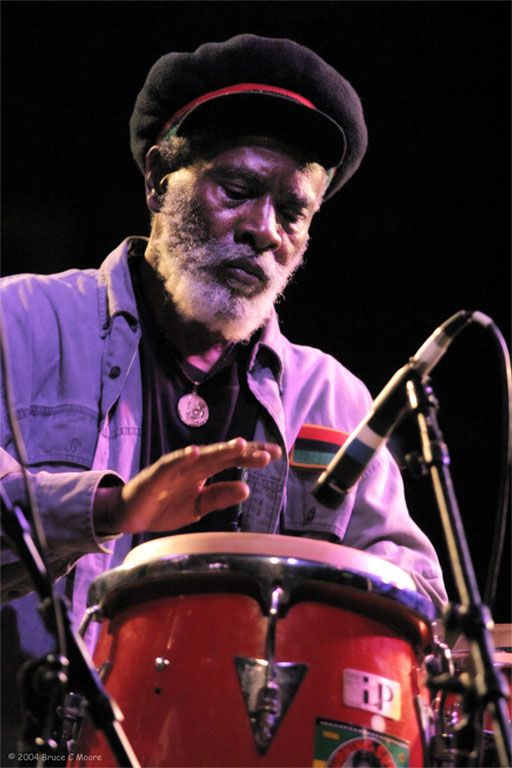
Those efforts have called attention to the genre, and specifically to those who helped bring reggae to the world in the '70s, including Burning Spear, Peter Tosh, Hibbert and Marley. In his time, Marley gave Burning Spear his personal seal of approval, and the Spear continues to maintain a devotion to reggae's roots while continuing his service to Jah. "I think people have to remember the originals," Burning Spear suggests. "So to be honest, I don't really feel no way about it when people put reggae in a different form. Regardless who's gonna do what with the music, I don't think they interfere with Burning Spear."
Burning Spear continues his mission of expressing his heart, of entertaining and educating the masses. He cleverly accomplishes that by winning over his listeners' bodies before he impacts their minds. He witnesses that process each time he takes the stage. "You see the head start to nod, you start to see one movement from one of these legs down here and another one, 'til the whole body just gets involved in the whole thing," he laughs. "You have to think about that when you're creatin' the music-you're not just creatin' the music for people to sit back and listen, 'Oh, that's all good and that's bad.' You need people to shake a leg."
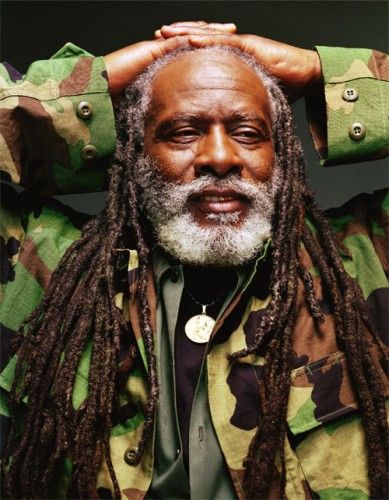
"Love," he says, "is a harmony thing, it's a communication. Love is a link. Music is a very important thing. We have to remember that no force is stronger than the music."
For more: www.BurningSpear.net
Spotlight: ISRAEL VIBRATION
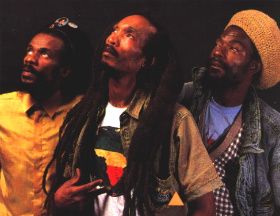

Thus, it was a surprising decision that Israel Vibration recorded their next album, 1981's Why You So Craven, with legendary dancehall producer Junjo Lawes. In many ways, it was a failed venture and the trio was so dissatisfied, they walked out before the sessions were complete. Bringing in the vocal trio the Tamlins, Lawes carried on without them and the resulting album, while not a total disaster, certainly lacked the spirit of its predecessors. Even an avid response at 1982's Reggae Sunsplash could not convince the trio that their future lay in a Jamaica where dancehall now reigned supreme (Live at Reggae Sunsplash, a split album from Israel Vibrations and the Gladiators, bears witness to their performance). Thus they relocated to New York City, perhaps believing that the large immigrant community could sustain them, or that America was now ready to embrace roots. They were wrong on both counts. A few occasional live appearances aside, the group swiftly disappeared from view. All three attempted solo careers, but only Bulgin made it on to record; his Mr. Sunshine album paired him with the Freedom Fighters Band. In 1987, the trio decided it was stronger together than apart, re-formed, and approached the RAS label. Although labelhead Doctor Dread had shown no interest in their solo efforts, he was enthusiastic about a reunion and quickly signed them to RAS. Strength of My Life appeared the following year, and aided by the Roots Radics, it found Israel Vibration as vibrant as ever.
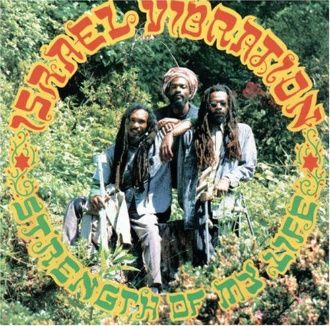
The trio now settled down for the long haul, and although their sound was no longer on the scene's cutting edge, they continued putting out strong sets. 1990 brought three albums, Praises, its dub companion Dub Vibration, and Israel Dub, drawn from the Strength of My Life set. The next year's Forever found the trio in a surprisingly comic mood, taking aim at themselves, dancehall, as well as contemporary issues. In 1992, a taste of the Vibrations' live power was delivered up on Vibes Alive, which was recorded at a show in Santa Cruz the previous October. Besides showcasing the trio's unique vocal styling, the album captures the Roots Radics at their fiercest. 1993's IV, and its dub companion IV Dub, gave heart to all those who believed that roots was fast becoming little more than a world lovefest. The album's militancy, notably on "Naw Give Up the Fight," proved the trio's own passionate cultural concerns and dread roots were not fading. The equally powerful On the Rock followed two years later and was also accompanied by a dub set. Then, in 1996, the group released their first single in years, the infectious "Feeling Irie," taken from their new album, Free to Move. This attempt to push the band's profile higher into the mainstream came to naught, the trio had already built up a loyal fan base and remained a successful live act, as 1997's Live Again proved. Unlike its live predecessor, this time around Israel Vibrations packed the album with crowd-pleasing favorites.
It was nine years since the trio had re-formed and signed to RAS; they'd been recording and performing steadily since, but Craig was no onger happy with their current path. In 1997, he left the trio to again pursue a solo career. His debut album, Another Moses, featured his own backing band, the Zionists. Continuing on as a duo, Spence and Bulgin reappeared in 1999 with a new studio album, Pay the Piper, and proved that Israel Vibrations would not be defeated by this defection. Jericho following hot on Piper's heels in the new year, while 2000 also saw the release of the limited-edition Power of the Trinity three-CD box set; Dub Combo appeared in summer 2001. Acknowledging Craig's longtime contribution to the group, the set is evenly divided between the trio, with each disc devoted to one individual member's greatest compositions. Israel Vibrations's career shows no signs of slowing, and the group has firmly carved a secure niche out of what once seemed an impenetrable surface. Their popularity seems assured, and they remain a vibrant live act and an always intriguing studio group.
-JoAnn Greene, All Music Guide
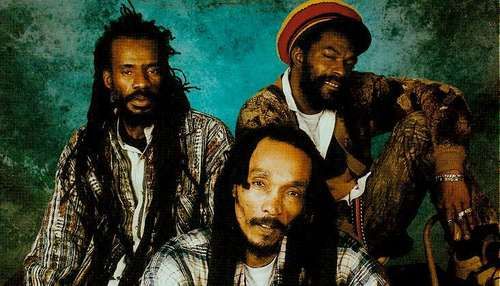
-
Comment by Christi Merritt-Hamilton on August 7, 2012 at 9:41pm
-
King Tubby holds my heart. He has created a Dub for my every mood, and I play him extensively ;-)
Comment
Reggae Nation on Surf Roots TV
Check out the Reggae Nation playlist on Surf Roots TV! Featuring the hottest music videos from Jamaica and worldwide. Download the Surf Roots TV App on Roku, Amazon Fire, Apple TV, iPhone & Android
@REGGAENATION ON INSTAGRAM
© 2025 Created by Reggae Nation.
Powered by
![]()
You need to be a member of Reggae Nation to add comments!
Join Reggae Nation